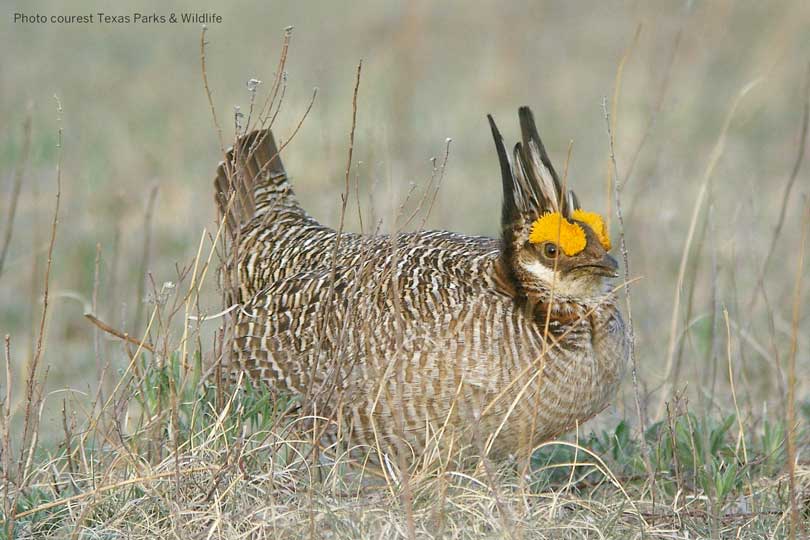By Jennifer Dorsett
Field Editor
An annual aerial survey released by the Western Association of Fish and Wildlife Agencies (WAFWA) shows the lesser prairie-chicken population in Texas and other states is up nearly 30 percent from last year.
The survey shows there are 38,637 birds, up from 29,934 last year, and it’s the sixth year of population growth.
The shinnery oak ecoregion of eastern New Mexico and the Texas Panhandle saw the biggest annual increase in birds, according to this year’s survey.
In 2014, the bird was listed as threatened under the Endangered Species Act (ESA), but a court ruling vacated the final listing in September 2015 after a judge determined state conservation efforts weren’t adequately considered prior to making the decision.
Since 2012, WAFWA has worked with the states of Colorado, Kansas, New Mexico, Oklahoma and Texas, as well as private landowners and the energy industry, to increase lesser prairie-chicken numbers. Their efforts are through the Lesser Prairie-Chicken Range-wide Conservation Plan.
The bird was removed from the federal list of endangered and threatened wildlife in July 2016. But three wildlife groups petitioned the U.S. Fish and Wildlife Service to add the lesser prairie-chicken to the more stringent endangered species list, saying the population had dipped “perilously close to zero” at times.
The brown-and-white striped bird’s population, however, routinely fluctuates in response to drought or other environmental changes, according to researchers.
“This approximately 30 percent annual increase is good news, but we know that year-to-year fluctuations are the norm with upland birds like the lesser prairie-chicken,” Roger Wolfe, WAWFA lesser prairie-chicken program manager, said in a statement. “The most encouraging result from the survey is the steadily increasing population trend over the last six years, which likely reflects improving habitat conditions.”
Because lesser prairie-chickens have a high response rate to environmental conditions, the ongoing drought through parts of the bird’s habitat may lead to a decrease in the population next year.
“Their populations are heavily reliant on the weather. In a drier year, they won’t have as many chicks,” Gene Richardson, Texas Farm Bureau (TFB) director of Commodity and Regulatory Activities, said. “We know that drought, hailstorms and other weather patterns really affect these birds, so the numbers change regularly.”
TFB has worked with stakeholders over the past four years to create a conservation plan for use if the lesser prairie-chicken is ever listed as endangered. TFB represents landowners, farmers and ranchers to ensure fair treatment for private property owners and agricultural interests.

